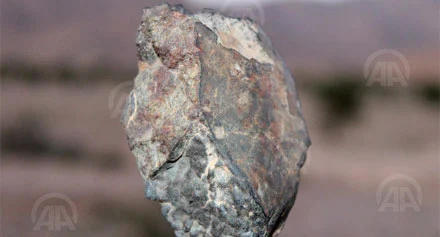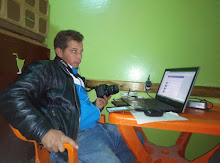Meteorology of Morocco .. A cross-border trade from deserts to international museums

Meteorology of Morocco .. A cross-border trade from deserts to international museums
Meteorology of Morocco .. A cross-border trade from deserts to international museums
Four years ago, residents of a village in the south-east of Morocco, called "Ticent", saw a flaming fireball that penetrated the atmosphere of the area very quickly and hit the ground kilometers from their quiet village
This happened exactly on a July night, when villagers learned months later that what they saw was a rare kind of meteorite, according to the Anatolian correspondent
After that, the scientists and hobbyists traveled to the "Ticent" in search of a sample of this new stone, which gave rise to the sky on the south of Morocco, and moved global networks for the smuggling and trade of meteorites and precious stones in a fierce competition to win part of the precious stone
Six months after the fall, the New York Times reported that the so-called "meteorite meteorite", a space stone from Mars, was purchased by the Natural History Museum in London for a "fictional" budget, The annual museum is dedicated to the acquisition of such stones.
The meteorite was called Ticent, a small village that fell on its outskirts 70 km north of the Moroccan city of Tata. It was one of the most important space stones that fell into the face of the planet during the past 100 years, according to specialized scientific reports
The stone also raised many questions about the activities of the meteorological trade networks in Morocco, prompting many parties to pay more attention to this subject, which has become an area of competition and conflict between scientists and traders
 |
| Meteorology of Morocco .. A cross-border trade from deserts to international museums |
Trade and research trip
"The trade of meteorites in the south is an active market in which the real is mixed with the visitor, run by traders and intermediaries who buy these stones from the simple population, and from nomads in the desert," says Ibrahim al-Yadouni, a young man from the southern city of Guelmim and an expert on meteorites. And exploit their poverty and need and ignorance of the real scientific value of these meteorites
In the southern city of Agadir, Anadol correspondent, Jalal al-Rokibi, from the desert town of Samara, carrying a bag of rocks of various sizes, saw it as an important meteorite and was awaiting its examination in the laboratory to ascertain its value and value. Scientific and commercial.
 |
| Meteorology of Morocco .. A cross-border trade from deserts to international museums |
Rukibi, a young man in his mid-30s, tells Anatolia that the search for meteorites in the desert "is a risky experience and requires great patience to reach a sample of space rocks
He adds that they go out with the nomads to the desert to look for meteorites when they know they fall in a certain place. The search may sometimes take more than two months. "When we find some small grains of the meteorite, we can see that there are larger parts nearby, Sometimes weighing more than seven kilograms
According to the Anatolian correspondent, the networks of trade in meteorites in Morocco are not organized networks, but rather networks that combine trade relations and interests, which are divided into categories, the most important of which are called "meteorite hunters", the main source of these stones from the deserts and areas where they fall, In search of meteorites, or purchase them from the population and herders, at prices that are often cheap compared to the imaginary prices in which these stones are sold in the world markets, and their prices vary according to their value and quality.
And sometimes worth between 500 and 1000 dollars per gram, depending on the type and value of scientific life on the ground, and sold one gram of the "Nizec Ticent", at a price more than twenty times, the price of the same weight of gold, according to the same source.
Another class of meteorite brokers acts as intermediaries, with large traders, and often these intermediaries are stable in major cities adjacent to known meteoric fall zones such as Tata, Guelmim, Rashidiya, Erfoud, Ouarzazate "and other desert cities
The space stones go through the stages of selling and smuggling them to the most important stage. They are transferred to traders outside Morocco who sell them on international markets and to museums in the world capitals, often with European and American merchants visiting Morocco. Important .
These stones are required goods for research institutes, major museums and precious stone collectors from the wealthy in Europe and America. NASA is at the head of these scientific institutions that reach high-value space stones.
The conflict over meteorites among traders and scientists
In his lab at the Faculty of Sciences at Ibn Azhar University in Agadir (southern Morocco), Dr. Abderrahmane Ebhi, a Moroccan researcher specializing in meteorites, is studying some samples of meteorites falling in southern Morocco. Meteorites who come from different regions carrying what they found in the deserts of the space rocks for testing in this laboratory specialized in the study of crystals and minerals.
 |
| Meteorology of Morocco .. A cross-border trade from deserts to international museums |
This laboratory, the second of its kind in Morocco, has contributed significantly to the publication of what he described as "the culture of meteorites" among the inhabitants of the desert and the nomads in the southern regions where meteorites are falling
He pointed out that Morocco leads the countries that market meteorites to the world, in light of the increasing interest in this issue in recent years and the smuggling of a large number of precious meteorites out of Morocco.
He called on Dr. "Ibhi" in his speech to Anatolia "to create a national museum specialized in the conservation of meteorites because it is an important national heritage must be preserved in Morocco and be available to people and generations to come." "The number of meteorites in the world is 50 meteorites, 21 of which were taken in Morocco, all of which left abroad, without knowing the circumstances of their transfer to the outside of the border, including meteorites were sold at auctions in America for well-known international museums
You may also be interested






